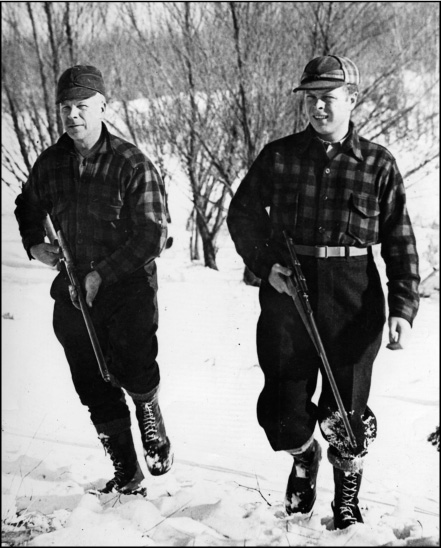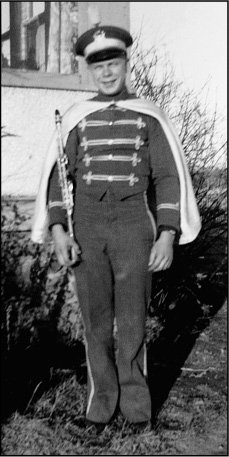
Sky-High Dreams

On a hot day in August 1945, a long, black car drove slowly down the dirt road leading from the Bong family farm to the small cemetery in nearby Poplar, Wisconsin. Thousands of people lined the road, heads bowed in respect for a fallen American hero. Farmers and storekeepers, schoolchildren and grandmothers—they had all come to say good-bye to Major Richard Bong. The people of Poplar had cheered him when he returned from World War II just a few months before. Bong was America’s most successful flying ace, a fighter pilot who had protected the skies of the South Pacific from Japanese attack. Now they mourned his death in a tragic flying accident. Few would forget his bravery in combat or his commitment to the difficult task of defeating the Japanese empire and bringing peace to the world.
By 1945, World War II had dragged on for 5 long years. More than 70 million people on both sides had lost their lives. Not just soldiers, but women and children had died by the millions during bombing attacks and other assaults on cities all over Europe and Asia. Richard Bong was just one of many young Americans who left home to fight in the war. Like thousands of others, he wanted to help America and its allies preserve freedom. As his funeral car rolled slowly along, the people of Poplar thought about the loss of such a special American, a man who had known since childhood he would make his mark on the world high up in the skies.

The year was 1928. Young Richard froze and looked up to the sky, a fishing pole balanced on his left shoulder. He listened carefully to the faraway drone of the army airplane delivering mail to President Calvin Coolidge. President Coolidge was on vacation nearby, on Cedar Island in Lake Superior (su pir ee ur). All thoughts of fishing in the creek were forgotten as Richard imagined himself in the cockpit, confidently guiding the plane through the clouds. Little did he know that years later he would become America’s most highly honored pilot.

Richard was an excellent student at Superior Central High School.
Richard’s younger sister Jerry ended his daydream. “Richard, come on!” she insisted. “We’ve only got a couple of hours before we have to be back for evening chores.” Richard turned and followed his sisters down the path toward the creek. He would have time later that night to work on his newest model airplane and dream of his future as a pilot.

At the dinner table the Bong family talked about the day and enjoyed each other’s company.
There was never much time for daydreaming on the Bong family farm in Poplar, a tiny town of just 500 people in the northwest corner of Wisconsin. It’s not that there weren’t enough people around to do the work. It’s just that there was always something to do. Richard was the oldest of 8 children. They all helped milk the cows, feed the pigs and chickens, and work in the fields around the farm. As the oldest son, Richard had lots of responsibilities. His father, Carl, worked on road construction most days, so Richard was in charge of keeping the farm going. He was usually awake at 5:00 in the morning and working hard until the school bus came.

Small family farms were common when Richard Bong was growing up.

Many farms had a tractor for plowing fields.
Richard’s favorite chore was tilling the soil using his father’s 1936 Caterpillar tractor. The Caterpillar was tricky to operate—heavy and difficult to steer—but Richard made it look easy. He could plow an acre in an hour and loved pushing the tractor into sharp turns at the end of each row. The arm strength and hand-eye coordination he gained from all of those hours plowing fields later made pushing an airplane into dives and rolls much easier.

Richard and his father loved hunting deer for the family dinner table.
When work was finished, the Bong family looked for fun. In the fall, all of the men and older boys went deer hunting or trout fishing on the Brule (brool) River. When winter came, the children ice-skated on the frozen river. During the summer, they played golf on a small course they built in the clearing behind their house. Even though they were far from other families, it was rarely quiet around the Bong household.
Richard stayed busier than anyone else in the family. After school he could often be found playing baseball or basketball. He was short but athletic, with a mean curveball and a quick jump shot. He liked almost every sport and was well liked by teammates because he played hard but fair.
Richard also played clarinet in the school band and sang in the church choir. Even his mother admitted he was “not much of a clarinet player,” but he sang beautifully. Years later Richard belted out his favorite tunes while zooming through the skies in his P-38 Lightning airplane. He was active with the 4-H Club and planted a row of evergreen trees on the family property as his final project.

Richard looked like a young soldier in his band uniform.
Generally a quiet and polite person, Richard had another side seen by only his family and close friends. He had teasing nicknames for his brothers and sisters: Joyce was “Knock-knees,” his sisters Jerry and Nel were “Monkey-face” and “Fats,” and his brother Bud was called “Buckshot.” He also tormented family and friends with practical jokes. When Richard and his friend Peter wanted to play a trick on their friend Tony, they suggested a contest to see who could jump the deepest into a huge pile of snow near the Bong family farm. Tony agreed to go first and leaped into the snow up to his neck. Richard and Peter quickly ran away, laughing loudly as Tony cried for help. Eventually, they came back and dug him out.
Despite his hectic schedule, Richard was an excellent student. He balanced all of his interests and responsibilities with his endless energy and enthusiasm for life. He graduated from high school in 1938 number 14 out of a class of 400.
Many people thought that because Richard was the oldest son, he would take over the family farm. But Richard had other plans. Even though he loved driving his father’s Caterpillar tractor, he knew his future lay not on a farm but up in the sky. His dream was to be a pilot. This meant he needed to go to college for at least 2½ years before he could enter the United States Army Air Corps. Richard finished high school in 1938 and immediately enrolled at Superior State Teachers College just 15 miles from Poplar. Not ready to abandon his family, Richard lived at home and helped with the morning chores before driving to classes each day. This commitment to hard work later made him one of the most successful air force pilots in American history.
Just a year after Richard graduated from high school, World War II broke out in Europe and Asia. This war happened after years of conflict between Germany, Italy, and Japan and their neighbors. Several countries had powerful dictators. In Germany, Adolf Hitler’s powerful army stormed across Europe and North Africa with the help of Italy’s dictator, Benito Mussolini (buh nee toh moo suh lee nee). Japanese armies led by General Hideki Tōjō (hee de kee toh joh) marched across China and other parts of the Asian continent. These 3 dictators and their armies were known as the Axis powers. They were opposed by the British, Russians, Chinese, and other countries known as the Allied forces. The Axis powers wanted power, natural resources such as oil and metals, and more land. Axis leaders and governments threatened freedom all around the world. Their armies imprisoned and killed millions of people. Many people lost their lives fighting against the Axis powers.
World War II spread across the globe as the Axis powers gained land and power.
Many people in the United States did not want to join the war. Americans helped Great Britain and the Allies by sending supplies, ships, and weapons across the Atlantic. But the United States did not officially join the war until December of 1941. That’s when the Japanese attacked the American naval base at Pearl Harbor.